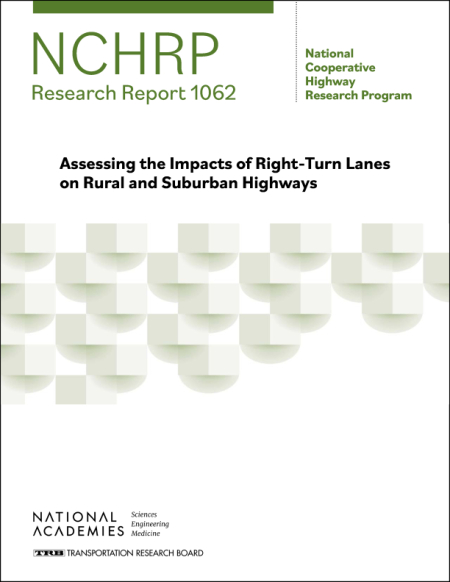Right-Turn Lanes on Rural & Suburban Highways
NCHRP's "Assessing the Impacts of Right-Turn Lanes on Rural & Suburban Highways" helps transportation practitioners at all levels better understand the value and impact of dedicated right-turn lanes (RTLs) and improve their overall performance and safety.
Dedicated right-turn lanes are typically installed on highways and arterial roads at intersections to improve motor vehicle traffic operations and avoid high-speed rear-end crashes. However, vehicles decelerating or queued in an RTL may obstruct the view of drivers turning onto or crossing the major road from the minor road at stop-controlled intersections where operating speeds are relatively high on the major road.
"Assessing the Impacts of Right-Turn Lanes on Rural & Suburban Highways" presents a state-of-the-art update to enhance the safety of RTLs on rural and suburban roads.
Read the full report here
Who is NCHRP?
The National Cooperative Highway Research Program conducts research in problem areas that affect highway planning, design, construction, operation, and maintenance in the United States.
Administered under the Transportation Research Board (TRB), NCHRP is a collaborative effort between the Federal Highway Administration (FHWA) and the National Academy of Sciences.
Right-Turn Lanes
Dedicated Right-Turn Lanes (RTLs) provide physical separation between turning traffic that is slowing or stopped and that are adjacent to thru-traffic at approaches to intersections.
Turn lanes can be designed to provide for deceleration prior to a turn or to queue vehicles as they wait for the opportunity to complete a turn.
Studies show dedicated RTLs can reduce traffic incidents by 14 - 26%.

